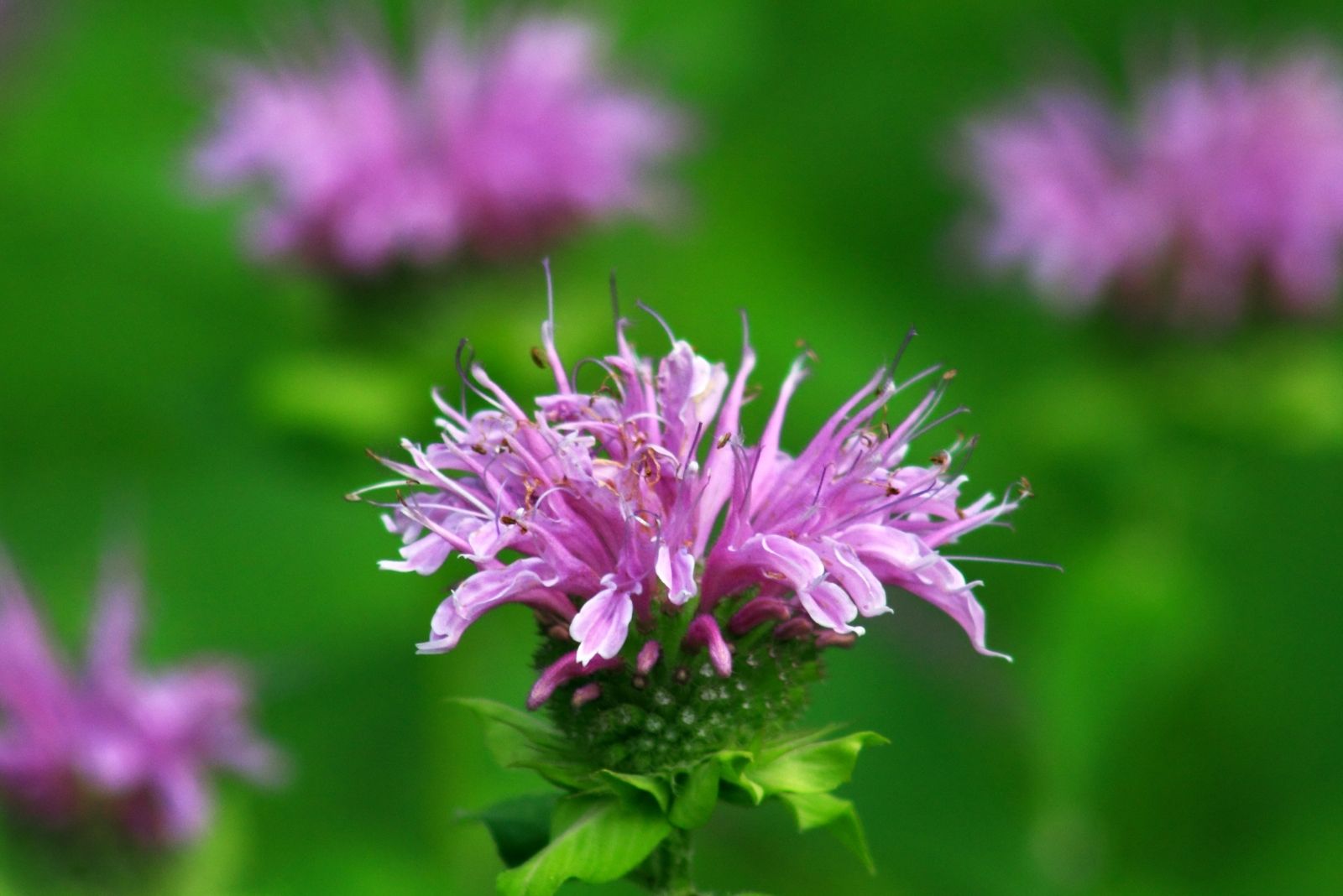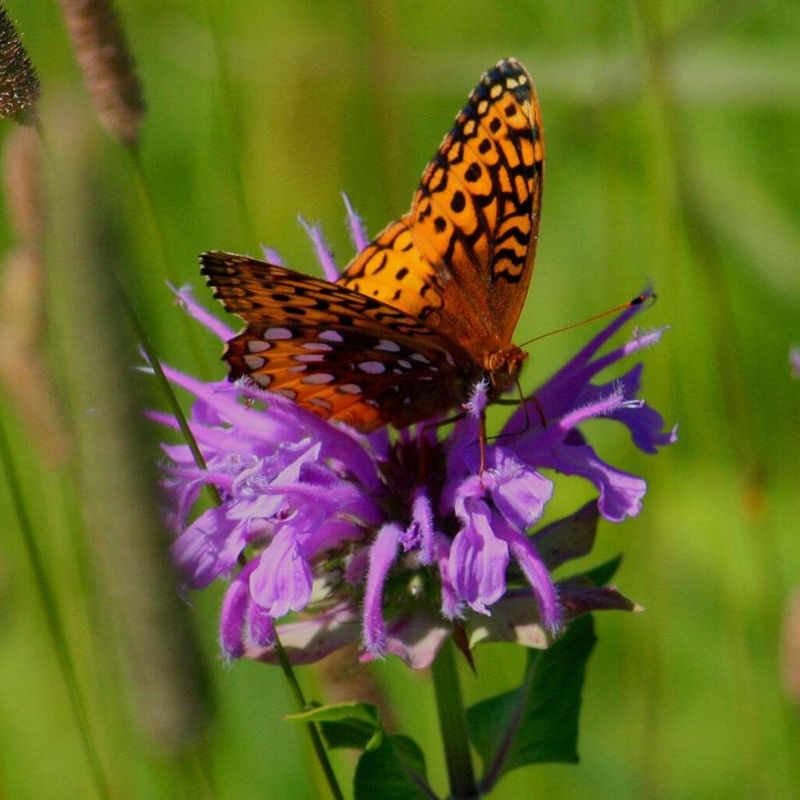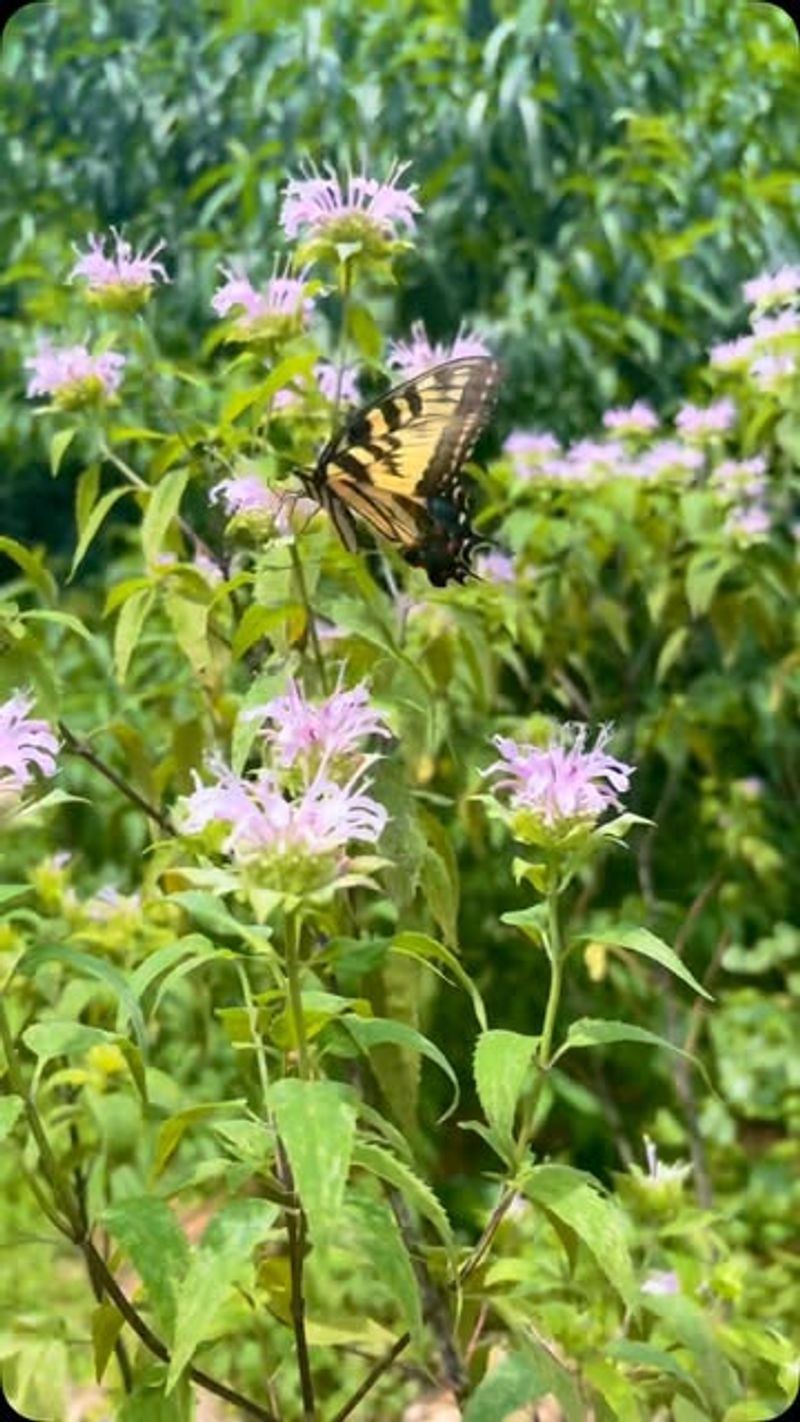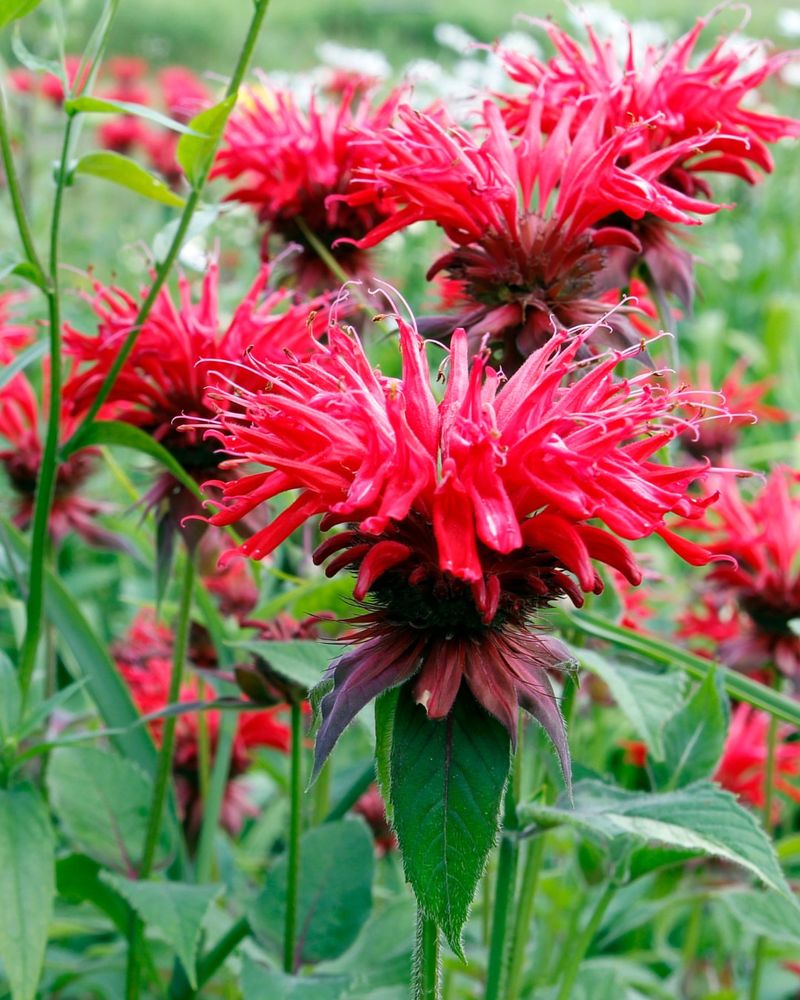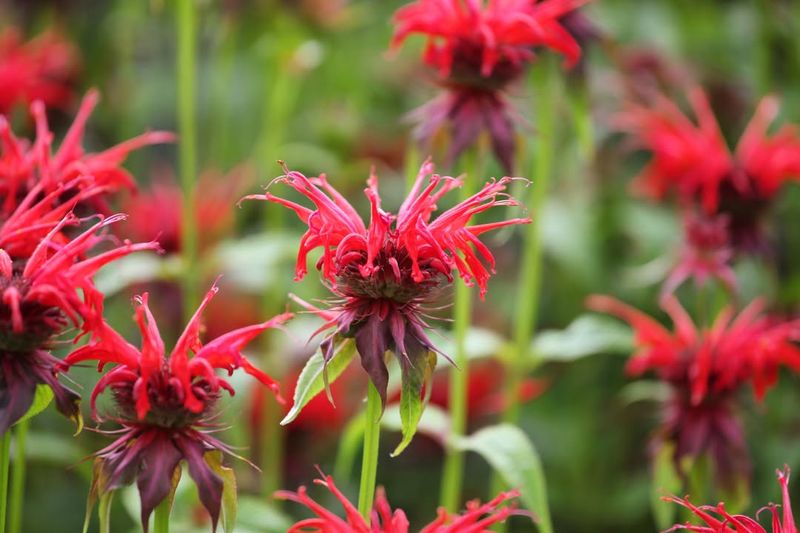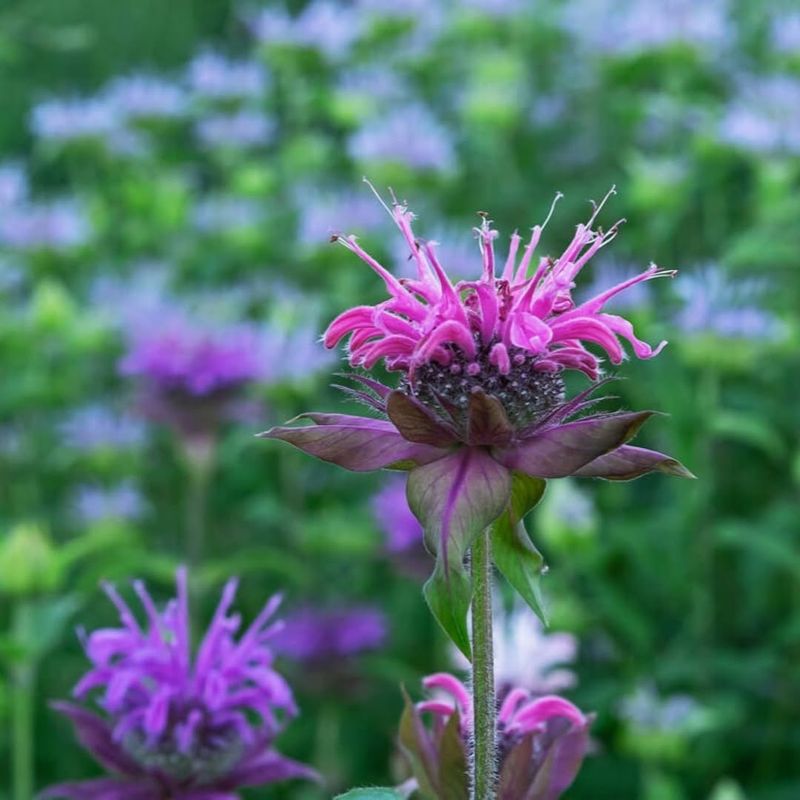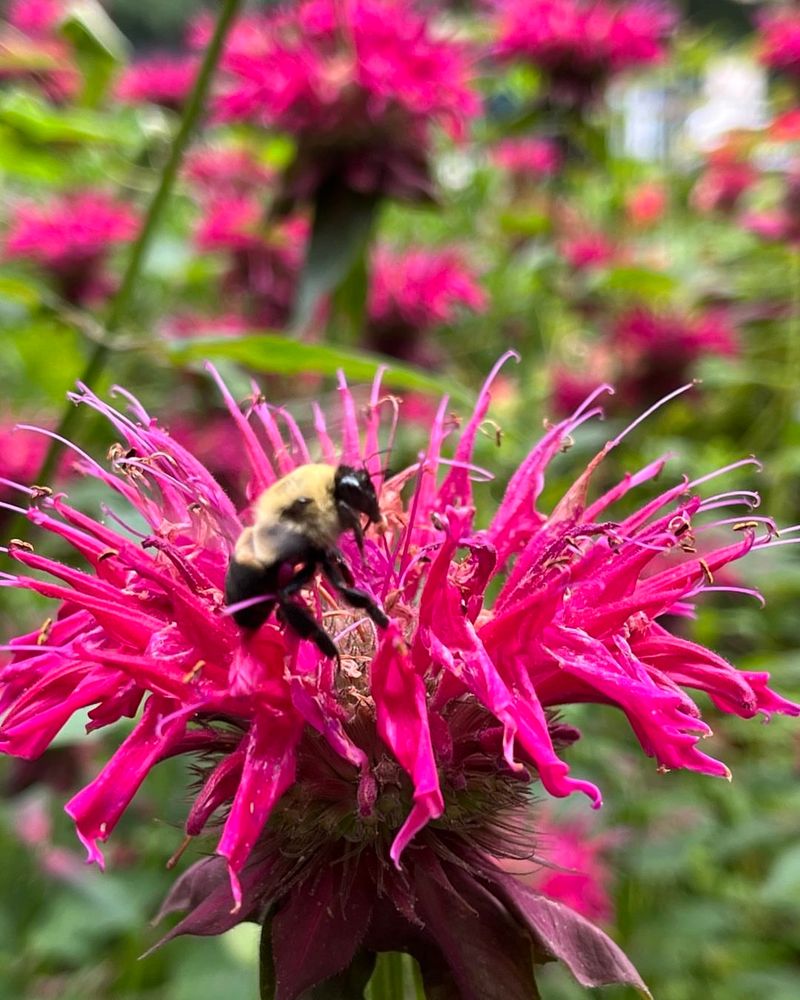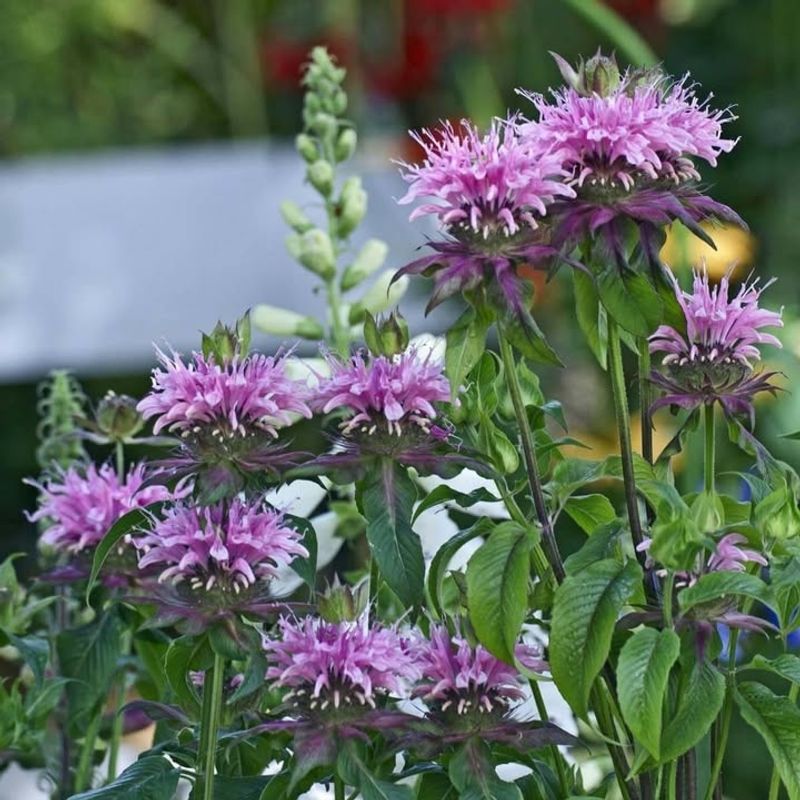Bee balm is a true showstopper in Ohio gardens, bursting with color and charm all season long. Butterflies can’t get enough of it—and honestly, neither can I.
This native wildflower adds life and movement from summer into early fall. Its blooms are like open invitations to pollinators passing through.
If you’re dreaming of a butterfly haven in your own backyard, bee balm is a must-have. It’s beautiful, easy to grow, and perfectly suited to Ohio’s climate.
1. Nectar-Rich Blooms That Fuel Butterfly Energy
Butterflies need high-quality fuel to keep their wings fluttering, and bee balm delivers exactly that. The tubular flowers are packed with sweet nectar that gives these delicate insects the energy they need for flight and reproduction.
Ohio gardeners notice swallowtails, monarchs, and fritillaries visiting bee balm repeatedly throughout the day.
Each bloom cluster offers multiple feeding opportunities, making your garden a reliable pit stop. Plant bee balm in sunny spots where butterflies can easily spot the colorful flowers from above.
2. Bright Colors Act Like Butterfly Magnets
Butterflies see colors differently than we do, and they’re especially drawn to red, pink, and purple hues. Bee balm comes in all these shades, creating a visual beacon that butterflies can’t ignore.
The contrast between the colorful petals and green foliage makes it easy for passing butterflies to locate your garden. Many Ohio gardeners report increased butterfly visits within days of their bee balm blooming.
Grouping several plants together creates an even stronger visual signal that attracts butterflies from greater distances.
3. Long Blooming Season Means Extended Visits
Unlike flowers that bloom for just a week or two, bee balm keeps producing fresh flowers from June through September. This extended blooming period means butterflies have a reliable food source throughout their active season.
Deadheading spent flowers encourages even more blooms, keeping your Ohio garden butterfly-friendly for months. New flower clusters continue emerging as older ones fade, creating constant activity.
This long season also supports different butterfly species as they emerge at various times during summer.
4. Native Plant Status Makes It Perfectly Adapted
Bee balm evolved right alongside Ohio’s native butterflies, creating a natural partnership that spans thousands of years. This means the plant’s bloom timing, nectar content, and flower shape perfectly match what local butterflies need.
Native plants like bee balm require less maintenance because they’re already suited to Ohio’s soil, rainfall, and temperature patterns. They don’t need special fertilizers or constant watering once established.
Supporting native plants also helps preserve the ecological relationships that keep butterfly populations healthy and thriving.
5. Easy Access Flower Shape Welcomes Many Species
The tubular shape of bee balm flowers accommodates butterflies with different proboscis lengths. Large swallowtails and small skippers can both feed comfortably, making your garden welcoming to numerous species.
Unlike some flowers with hidden nectar, bee balm offers easy access that doesn’t require butterflies to expend extra energy.
The flowers cluster in rounded heads, allowing multiple butterflies to feed simultaneously without competition. Ohio gardens with bee balm often host a greater diversity of butterfly species than those without it.
6. Aromatic Leaves Provide Shelter And Safety
The minty-scented foliage of bee balm does more than smell wonderful to humans. Butterflies often rest on the leaves between feeding sessions, using the sturdy stems as safe perches.
The aromatic oils in the leaves also deter some predators and pests, creating a safer environment around the flowers. Ohio gardeners appreciate that bee balm stands resist deer browsing, keeping the butterfly buffet intact.
The dense growth habit provides shelter from wind and light rain, extending the time butterflies can actively feed in your garden.
7. Clumping Growth Creates Butterfly Highways
Bee balm naturally spreads into generous clumps that create visual pathways through your garden. Butterflies follow these colorful corridors, moving from one flower cluster to the next with ease.
The spreading habit means your initial planting becomes more butterfly-friendly each year as the clumps expand.
Many Ohio gardeners divide their bee balm every few years, creating new butterfly stations throughout their landscape. These natural groupings also make it easier for butterflies to find the plants from a distance.
8. Companion Planting Potential Multiplies Butterfly Benefits
Bee balm plays well with other butterfly favorites like coneflowers, milkweed, and Joe-Pye weed. Planting these together creates a diverse buffet that attracts even more butterfly species to your Ohio garden.
Different plants bloom at slightly different times and heights, providing continuous food sources and visual interest. The variety also supports butterflies throughout their entire lifecycle, from caterpillar to adult.
Combining bee balm with companions creates a mini-ecosystem that benefits butterflies, bees, and other beneficial insects simultaneously.

